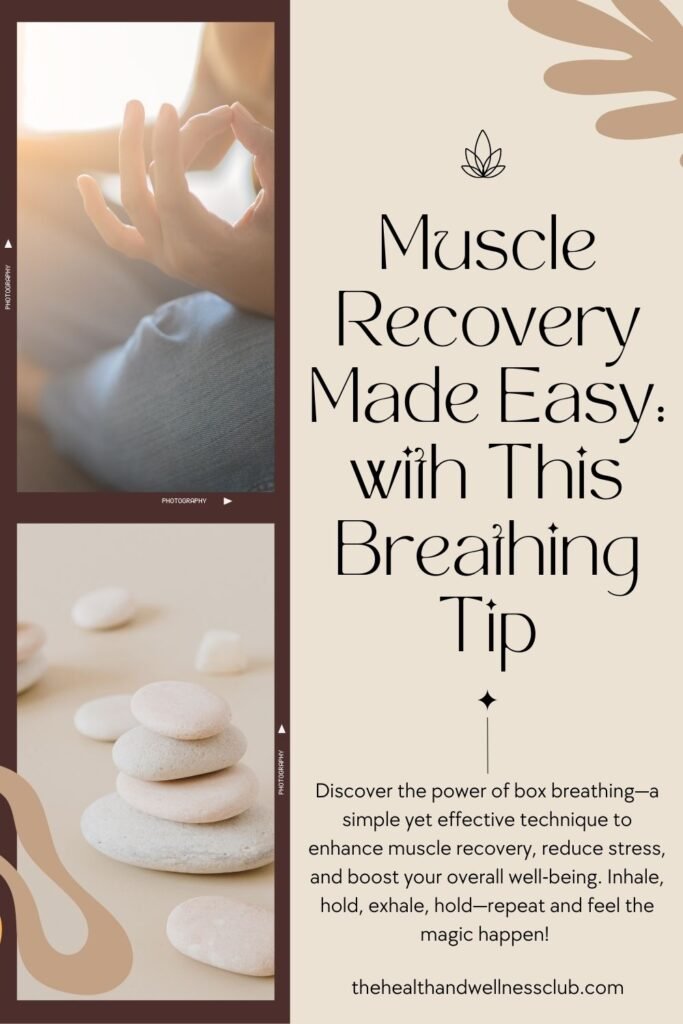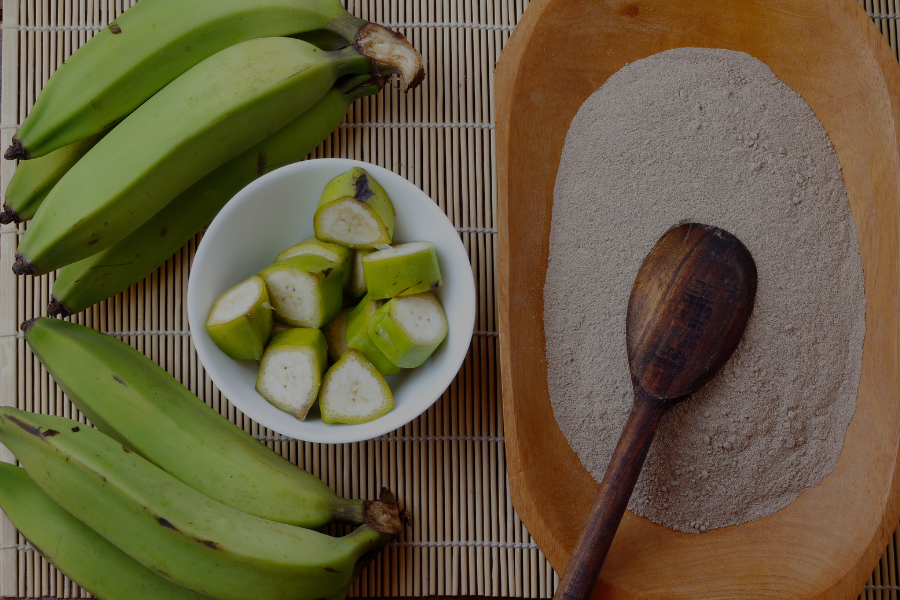Let’s be honest—most of us focus on the workout, not the wind-down. But here’s the truth: muscle recovery is where the real magic happens. It’s during recovery that your muscles repair, rebuild, and grow stronger. Neglecting this phase can lead to fatigue, soreness, and even injury.
That’s why today, in this blog post, I want to share a simple yet powerful breathing technique that can transform your recovery game: box breathing.
What Is Box Breathing?
Box breathing, also known as square breathing, is a controlled breathing technique that involves four equal parts:
- Inhale for 4 seconds
- Hold for 4 seconds
- Exhale for 4 seconds
- Hold for 4 seconds
Repeat this cycle for several minutes. It’s simple, calming, and incredibly effective for activating your parasympathetic nervous system—the part of your body responsible for rest and recovery. As you have built more experience with box breathing, you may increase it from 4 seconds to 6 seconds, depending on your preference.
To learn more on how to do box breathing, check out this video for a guided session with soothing and relaxing music to help you relax and unwind.
The Science Behind Breathing and Muscle Recovery
You might be wondering, “How can breathing help with muscle recovery?” Great question.
When you engage in intense exercise, your body enters a sympathetic (fight-or-flight) state. This is great for performance, but not so great for recovery. To heal and rebuild, your body needs to shift into a parasympathetic (rest-and-digest) state. That’s where box breathing comes in.
A study published in Frontiers in Psychology found that slow, controlled breathing techniques like box breathing significantly reduce cortisol levels and heart rate variability, both of which are markers of stress. Lower stress means your body can focus more energy on muscle recovery.
Another study in the Nature demonstrated that breathwork enhances stress management and mental health, contributing to improved autonomic nervous system balance and accelerated physical recovery.
Why Box Breathing Works for Muscle Recovery
Here’s how box breathing directly supports muscle recovery:
- Reduces inflammation: Chronic stress can increase inflammation, which slows down healing. Box breathing helps lower stress hormones like cortisol[1].
- Improves oxygen delivery: Deep breathing increases oxygen saturation in your blood, which helps deliver nutrients to your muscles more efficiently.
- Enhances sleep quality: Practicing box breathing before bed can improve sleep, which is critical for muscle recovery and growth.
- Promotes relaxation: It helps calm the nervous system, reducing muscle tension and soreness.
How to Use Box Breathing After a Workout
Here’s a simple post-workout routine you can try:
- Find a quiet space: Sit or lie down comfortably.
- Close your eyes and begin the box breathing cycle:
- Inhale for 4 seconds
- Hold for 4 seconds
- Exhale for 4 seconds
- Hold for 4 seconds
- Repeat for 5–10 minutes. Focus on your breath and let your body relax.
Try box breathing with this video, which provides guidance and relaxing music for deep relaxation and recovery. You can pair this with light stretching or foam rolling to enhance the effects.
My Personal Experience with Box Breathing
I’ll be honest—I used to skip recovery altogether to dash off to work after my morning workout. I’d finish a workout, grab a protein shake, and move on with my day. But I often felt sore, sluggish, and mentally drained. Once I started incorporating box breathing into my post-workout routine, everything changed.
Not only did my muscle recovery improve, but I also noticed better sleep, less anxiety, and more energy throughout the day. It’s now a non-negotiable part of my fitness routine.
Common Mistakes to Avoid
If you’re new to breathwork, here are a few things to keep in mind:
- Don’t rush it: The goal is to slow down, not hyperventilate.
- Be consistent: Like any habit, the benefits build over time.
- Avoid distractions: Put your phone away and focus on your breath.
Who Should Try This?
Box breathing is safe and effective for almost everyone—from elite athletes to weekend warriors. If you’re looking to improve muscle recovery, reduce stress, or simply feel more grounded, this technique is for you.

Bonus Tip: Combine with Cold Therapy
Want to take your muscle recovery to the next level? Try combining box breathing with cold therapy (like a cold shower or ice bath). Breath control can help you stay calm in the cold, and exposing yourself to cold might reduce inflammation and speed up recovery. Sure, it can be tough to practice in chilly weather at first, but stick with it and you’ll get used to it.
Final Thoughts: Breathe Your Way to Better Recovery
Muscle recovery doesn’t have to be complicated. Sometimes, the most powerful tools are the simplest. Box breathing is free, easy to learn, and incredibly effective. Whether you’re lifting heavy, running long distances, or just trying to stay active, this one breathing tip can make a world of difference.
So next time you finish a workout, don’t just collapse on the couch. Take a few minutes to breathe—your muscles will thank you.






One Comment
Pingback: